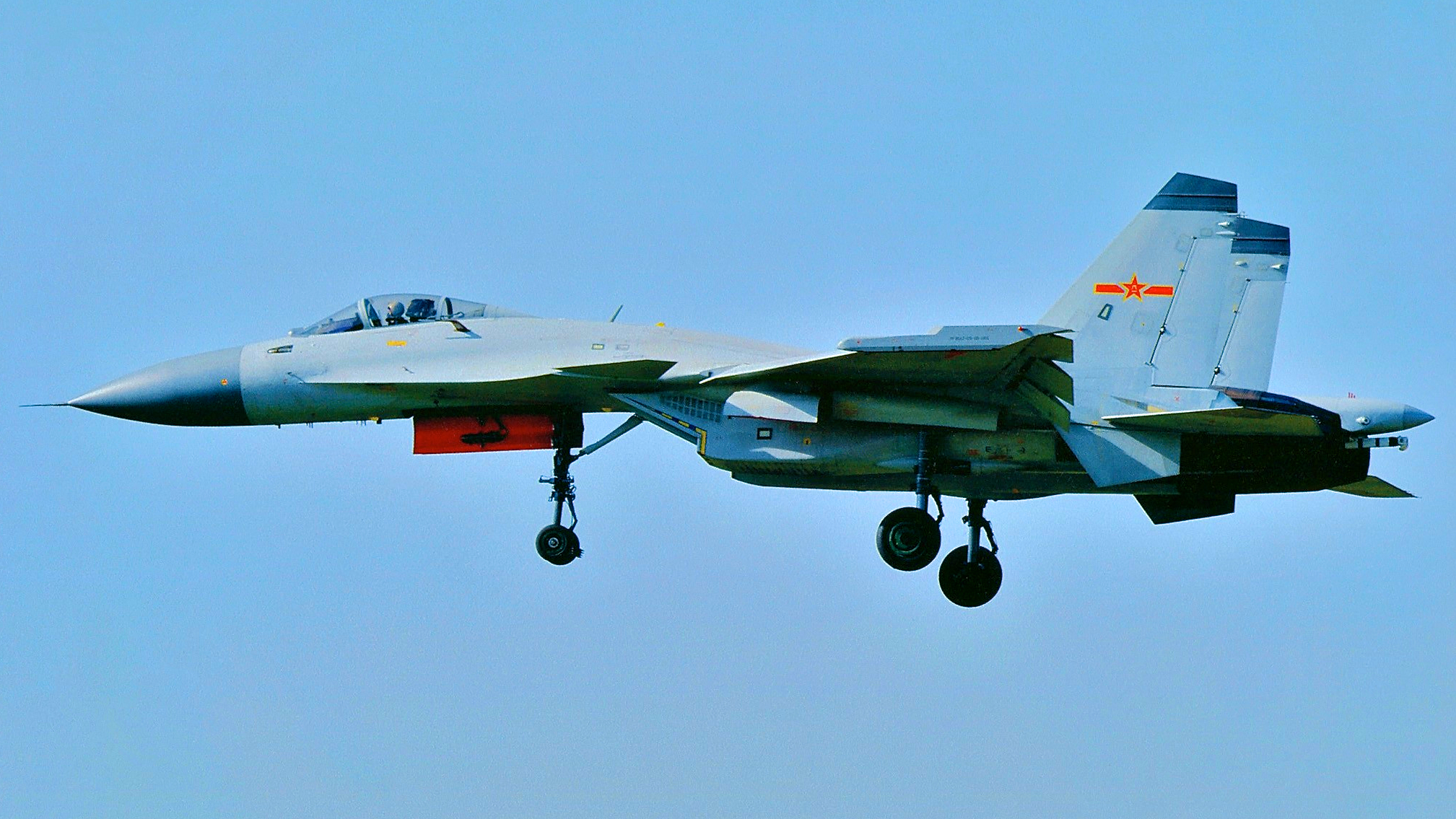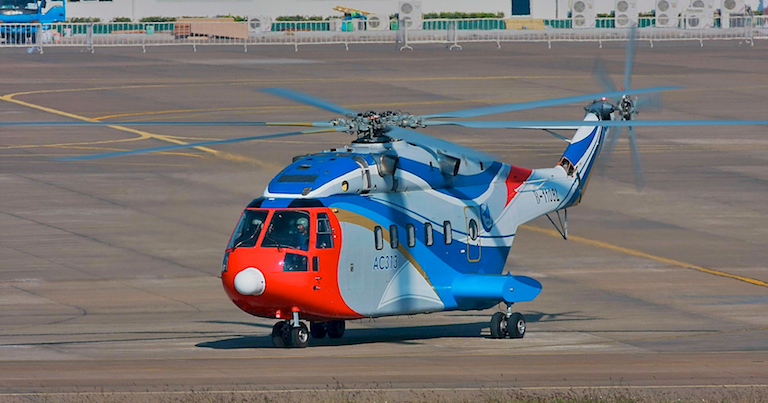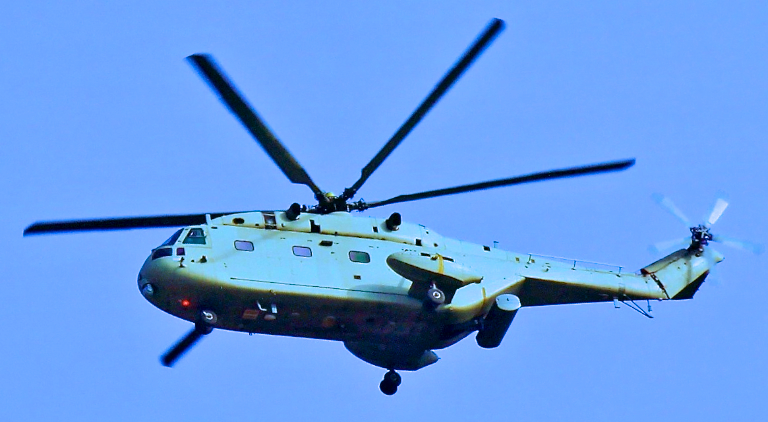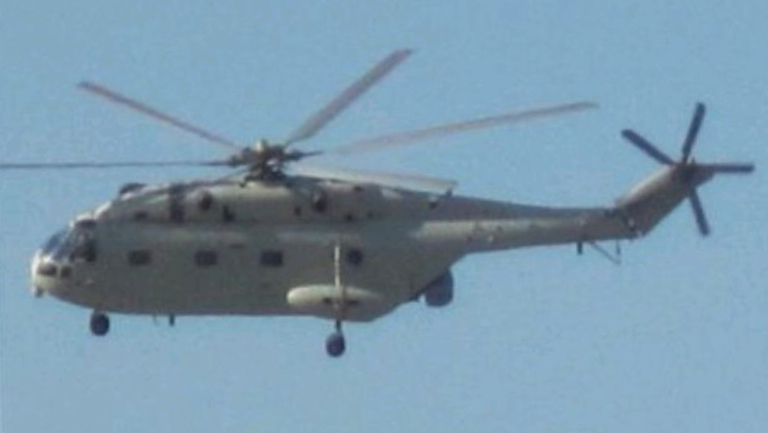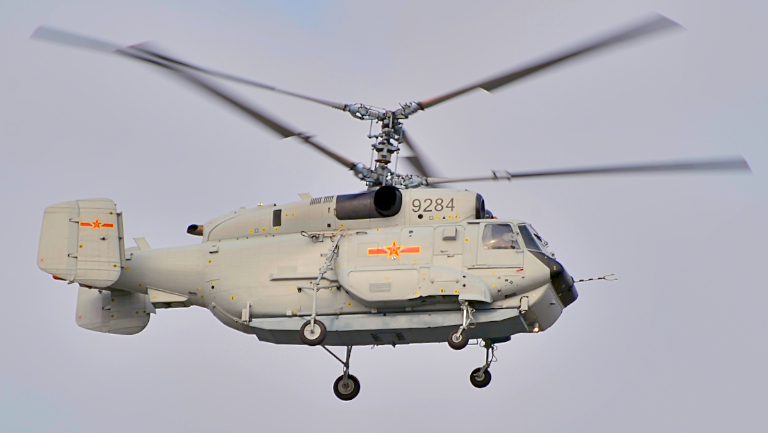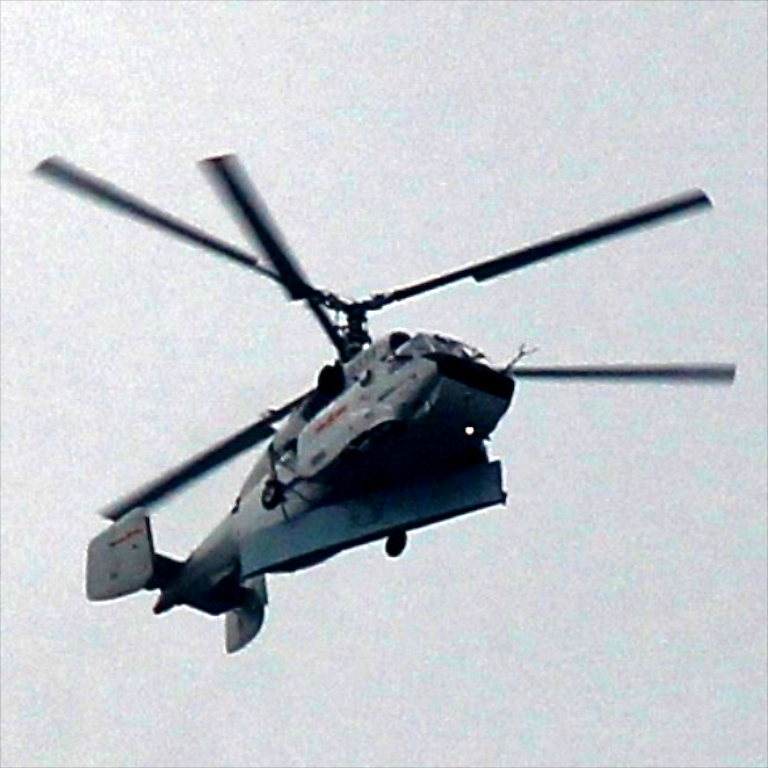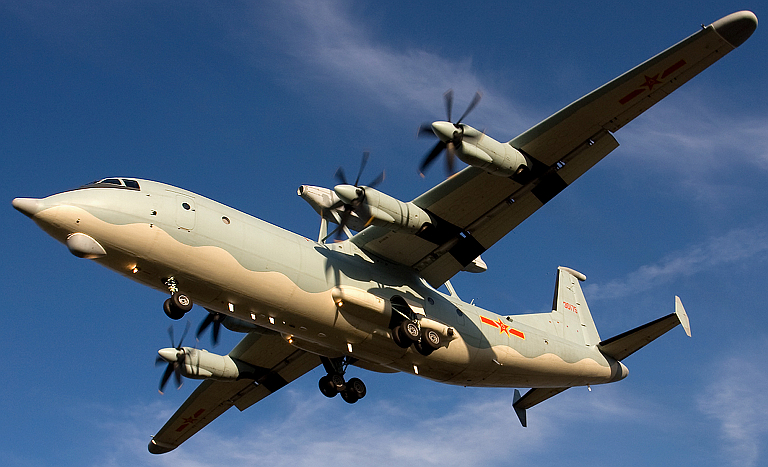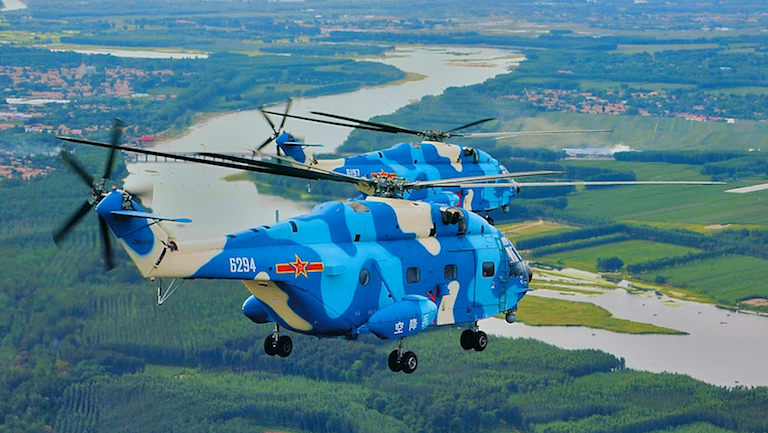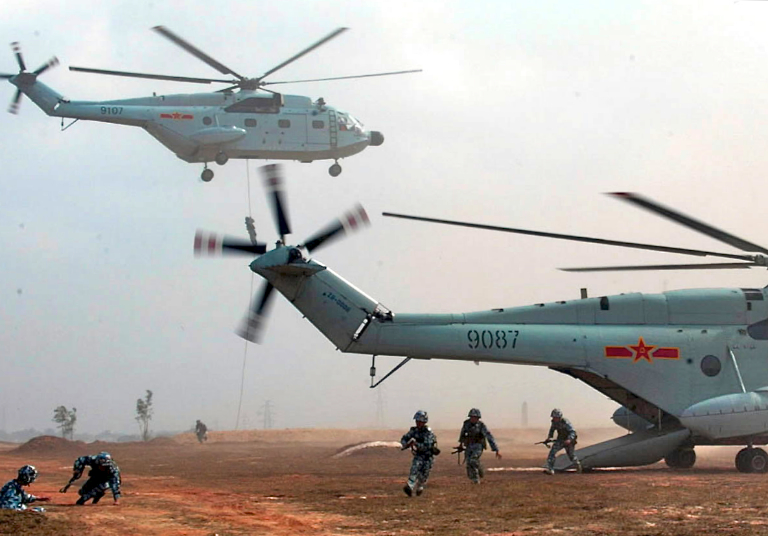|
||||||||||||||||||||||
![Home - Air Power Australia Website [Click for more ...]](APA/APA-Title-Main.png) |
||||||||||||||||||||||
![Sukhoi PAK-FA and Flanker Index Page [Click for more ...]](APA/flanker.png) |
![F-35 Joint Strike Fighter Index Page [Click for more ...]](APA/jsf.png) |
![Weapons Technology Index Page [Click for more ...]](APA/weps.png) |
![News and Media Related Material Index Page [Click for more ...]](APA/media.png) |
|||||||||||||||||||
![Surface to Air Missile Systems / Integrated Air Defence Systems Index Page [Click for more ...]](APA/sams-iads.png) |
![Ballistic Missiles and Missile Defence Page [Click for more ...]](APA/msls-bmd.png) |
![Air Power and National Military Strategy Index Page [Click for more ...]](APA/strategy.png) |
![Military Aviation Historical Topics Index Page [Click for more ...]](APA/history.png)
|
![Intelligence, Surveillance and Reconnaissance and Network Centric Warfare Index Page [Click for more ...]](APA/isr-ncw.png) |
![Information Warfare / Operations and Electronic Warfare Index Page [Click for more ...]](APA/iw.png) |
![Systems and Basic Technology Index Page [Click for more ...]](APA/technology.png) |
![Related Links Index Page [Click for more ...]](APA/links.png) |
|||||||||||||||
![Homepage of Australia's First Online Journal Covering Air Power Issues (ISSN 1832-2433) [Click for more ...]](APA/apa-analyses.png) |
||||||||||||||||||||||
| Last Updated: Mon Jan 27 11:18:09 UTC 2014 | ||||||||||||||||||||||
|
||||||||||||||||||||||
Advances in PLA-N Carrier AviationTechnical Report APA-TR-2012-0402 |
| Martin
Andrew, BA(hons), MA, PhD, RAAF(Retd) Carlo Kopp, BE(Hons), MSc, PhD, AFAIAA, SMIEEE, PEng 10th April 2012 Text © 2012, Martin Andrew, Carlo Kopp  A J-15D Flanker D prototype during
flight test. The aircraft is a reverse engineered Su-27K Flanker D with
numerous airframe improvements, and Chinese avionics and systems
developed for the J-11B Flanker B.
|
Introduction |
| The debate on the growth of
China's blue water naval capabilities has intensified over the last
year, as the
rebuilt former Soviet aircraft carrier Varyag, sister ship to Russia's
sole carrier, the Kuznetsov, continues with sea trials, which commenced
during 2011. The Varyag lay abandoned in a Ukrainian shipyard, was
procured as scrap, towed to Dalian in China, rebuilt and refitted, and
is now being prepared for eventual operational use. At least one
derelict Su-27K Flanker D prototype was also acquired in the Ukraine,
and used as a template for the reverse engineered J-15B shipboard
Sino-Flanker. Analysts across the West and Western aligned nations in Asia have speculated at length on China's motives for acquiring the Varyag, and planning for follow-on CV hulls. The expansion and recapitalisation of China's legacy fleet of diesel-electric and early nuclear submarines can be readily explained by invoking the established Second Island Chain doctrine and deeper area denial strategy of large scale deployment of A2/AD (Anti-Access / Area Denial) capabilities. The expensive investment into what is apt to become a naval air arm of several CVBGs cannot be readily explained or interpreted in the intellectual framework of China's publicly stated purely defensive and non-interventionist posture. China is evidently departing from its traditional “brown water” focus in the PLAN fleet structure, intended to deny and/or control China's immediate coastal waters, and is now investing significant national wealth into the development of a genuine “blue water” capable fleet. The development of genuine “blue water” capable fleet will take about a decade of intensive effort, as not only must legacy “brown water” vessels be replaced with “blue water” equivalents, but also operational technique and doctrine need to be developed. Ample opportunities will however exist to emulate Western navies who have centuries of experience in this area - a decade is not a long time in Grand Strategy terms.  US DoD image.
The established Second Island Chain strategy or doctrine, is fundamentally centred on an A2/AD model or denial strategy, not unlike Australia's long standing “denial of the sea-air gap” doctrine. The fundamental difference between these doctrines lies in the geographical extent involved, with the Second Island Chain spanning an arc from the Aleutians, through the Marianas, the Indonesian Archipelago, through to the Andamans in the Indian Ocean. While Australia's sea-air gap is largely open ocean, China's Second Island Chain encompasses most of the nations of the Far East in its footprint. Inevitably, China's development of capabilities to deny the use of oceans and fixed sites under the Second Island Chain doctrine will place most nations in Asia at risk of aerial, ballistic or cruise missile attack in a time of conflict, and places them under the coercive footprint of such capabilities in times of peace. The Second Island Chain footprint also overlaps Australia's sea-air gap, presenting a basic clash in areas of fundamental strategic interest. Until the commitment to the development of a CVBG capability, virtually all of China's force structure recapitalisation has been centred on developing A2/AD capabilities for denial within the Second Island Chain. These include:
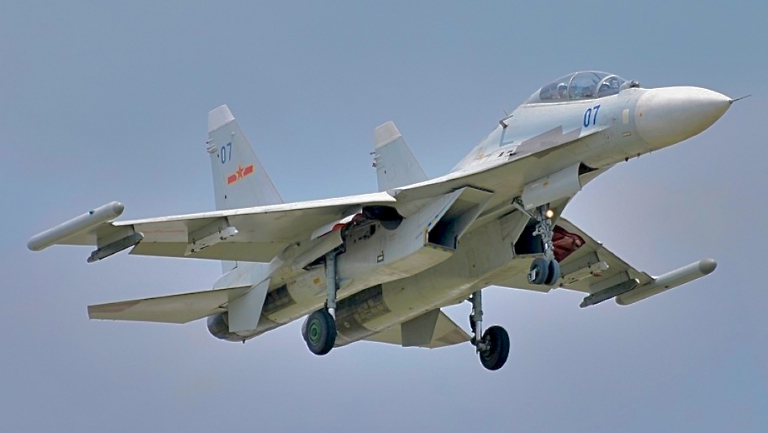 The PLANAF operates a formidable fleet of land based anti-shipping strike aircraft. Depicted a PLANAF Su-30MK2 in flight (Chinese Internet).  PLANAF Xian H-6H Badger (Zhenguan
Studio, © 2010 Air Power Australia).
China's policy of not declaring its strategic intent has fuelled ongoing speculation. It's stated intention of deploying multiple aircraft carriers is frequently interpreted as an intent to develop a global intervention capability, modelled on the US Navy and Royal Navy paradigm applied through the latter half of the twentieth century. The exact strategic intent behind this expensive investment has not been well articulated by the Chinese, magnifying discomfort across Asia as a result. In the context of the current rhetorical war over South China Sea resources, the inevitable interpretation is that PLAN CVBGs would be employed as a tool for coercion of ASEAN nations, and Japan with which China also disputes access to seabed resources. The Soviet CVBG model is of interest in this context. The Soviet carrier fleet was built to defend ocean “bastions” near the Soviet ballistic missile submarine (SSBN) bases, the intent being to defeat US Navy and Royal Navy attack submarines sent in to sink Soviet ballistic missile submarines, and later to keep US Navy CVBGs away from the bastions. While the Soviets developed the potent multirole Su-27K/Su-33 Flanker D for the latter role, the Soviet carrier air wing composition was strongly oriented to ASW, rather than the traditional Western CVW composition with its heavy emphasis on ASuW strike and coastal target strike capabilities13, 14. The current CVW carried on the V-MF Item 1143.5 aircraft carrier Admiral Kuznetsov comprises one squadron of twelve Su-33 Flanker D, five Su-25UB Frogfoot trainers, eighteen Kamov Ka-27PL Helix A ASW helicopters, and six other Helix variants, including AEW&C and SAR/Vertrep variants. It is without doubt an ASW platform with sufficient fighter capability to protect the carrier, and its ASW payload. Western CVW composition has varied since the 1940s, but traditionally the CVW was split between air superiority fighters, specialised ASW assets, dual role ASW/ASuW assets, and sea control / land attack assets to defeat “blue water” navies, but also to support amphibious operations in contested space. The weak ASW/ASuW and air defence capabilities of current US Navy CVWs are a dramatic departure from the historical pattern, yielding primarily a littoral COIN and intervention capability against unsophisticated developing nations. The latter role has dominated USN CVBG operations since 1991. The actual strategic intent underpinning the PLAN development of a CV fleet will only be determined once the composition of the PLAN shipboard air wing is known. If the air wing is optimised for air defence and ASW, then clearly the fleet will be intended to protect PLAN SSBN bastions in the Yellow Sea, and possibly South China Sea. If the air wing is oriented toward air superiority and strike operations, then the PLAN CVs would qualify as traditional CVAs or “attack carriers”, intended for blue water sea control operations and distant or regional interventions. A balanced mix in PLAN CVW composition would yield less clear conclusions, but would also present difficulties given the smaller displacement of the Varyag class, compared to US Navy CVNs, and resulting smaller air wing size. There are pragmatic limits to how many roles any given CVW asset can perform well. Chinese Observations on PLAN CVW CompositionThe Chinese defence journal Jianzai Wuqi notes that the PLAN CVW will eventually comprise the J-15B Flanker D shipborne strike fighter and various variants of the Z-8 (Aérospatiale / Sud-Aviation SA.321G Super Frelon) helicopter. Until sufficient numbers of the J-15B and Z-8 helicopters are available the aircraft carrier will initially deploy to sea with a mix of Z-8 and imported Russian Kamov Ka-28 Helix A ASW and Kamov Ka-31 Helix AEW&C helicopters17. The PLAN regards both the Russian built Ka-28 ASW helicopter and the Ka-31 AEW&C helicopter as stop gap measures, until more Chinese built Z-8 ASW and AEW&C variants are built. Although the Ka-31 only uses half of the deck area used by the Z-8, as a result of which more Helix variants can be carried, compared to larger Z-8 variants, the PLAN wants the indigenously built and more capable Z-8 aboard the carrier. The Z-9C (Eurocopter AS.365 Dauphin) will deploy on suitably equipped escorts, and possibly the Ka-28 may be carried on larger escort vessels. Initially, the aircraft carrier may deploy with no surface strike capability although the Z-9C could deploy onboard with the TL-10A/B lightweight ant-shipping missiles. In perspective, this disclosure sheds little light on the future role of the PLAN CVW, as the mix of J-15B and helicopters has yet to be disclosed, and the mix of helicopter variants has also yet to be disclosed. For comparison, the CVW embarked by France's 42,000 tonne Charles de Gaulle comprises a mix of less capable Rafale M air defence fighters, Super Étendard strike fighters, more capable E-2C Hawkeye AEW&C aircraft, and smaller SA365 Dauphin, EC725 Caracal and AS532 Cougar helicopters. The intent is to eventually replace the larger helicopters with an NH90 variant. |
China's Aircraft Carrier Program |
Sea trials of the former
Soviet Item 1143.5 aircraft carrier Varyag, sister ship to Russia's
Admiral Kuznetsov, commenced in August 2011. The Varyag was built at
Nikolayev in
the Ukraine, but still in the process of outfitting with internal
systems when the USSR collapsed and Ukraine reverted to being an
independent nation state. The Varyag remained derelict in the shipyard
until 2001, with claims it was stripped by personnel for scrap, until
it
was towed to China, following its purchase by a Hong Kong based company
with the publicly stated intent for its future use as a floating casino
in Macau. The
Varyag, devoid of engines, wiring, and plumbing was towed to the
Dalian naval shipyard, and subjected to a deep overhaul and refit15.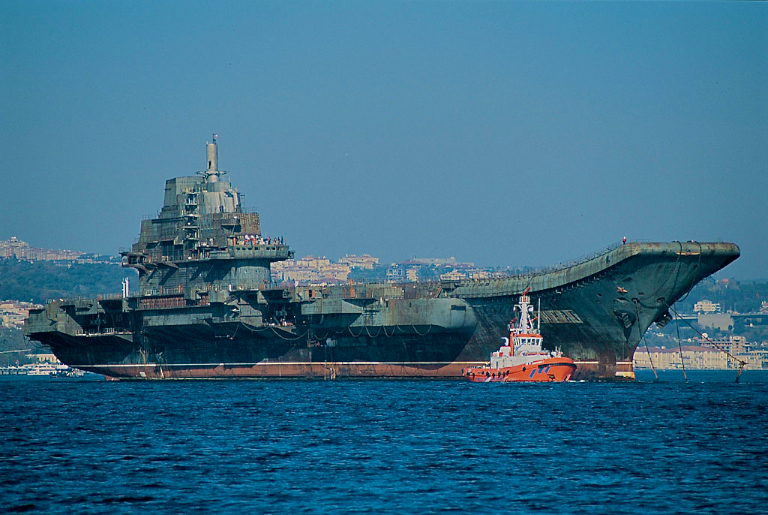 US Navy image of the derelict Varyag being towed through the Bosporus in 2001, ostensibly to become a floating casino in Macau. The 60,000 tone full displacement class Item 1143.5 carriers are a derivative of the earlier Item 1143 Kiev class design, enlarged and fitted for ski-jump / arrestor cable fixed wing aircraft. The original design included twelve launch tubes, under the forward flight deck, for supersonic 320 NMI range P-700 Granit / SS-N-19 Shipwreck ASCMs, common to the Kirov class cruisers, and the Oscar class SSGNs. An air wing of 40 to 50 aircraft, comprising a mix of fighters and helicopters, could be embarked. The weapon system and air wing were optimised to defend Soviet SSBN bastions from US Navy SSNs and CVBGs, and the class were designated as TAVKR or “heavy aviation cruisers”, thus making them essentially ASW / AAW carriers. In practical terms, the Item 1143.5 provides about one half of the CVW deployment capabilities of a US Navy Nimitz class carrier, and with a steam turbine propulsion system, is dependent on supporting tankers or other replenishment vessels. Conversely, the Item 1143.5 has almost three times the displacement of the Royal Navy Invincible class, and can deploy a CVW around 2.5 times larger. 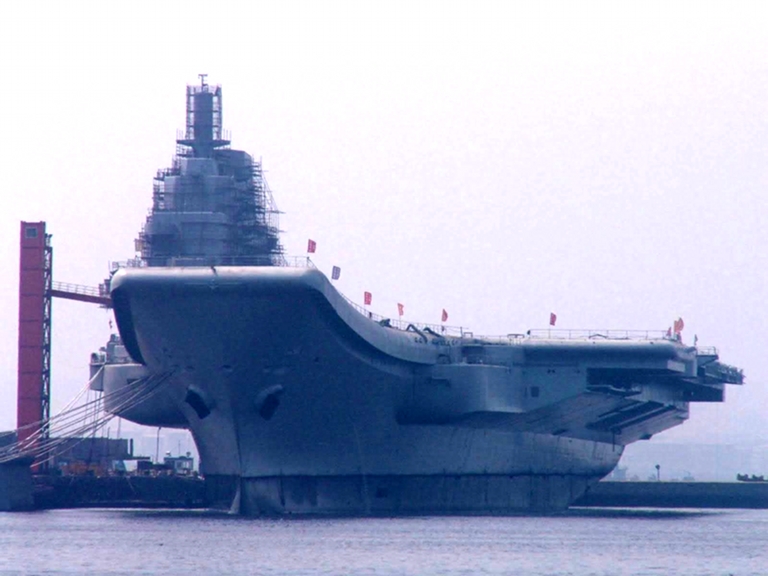 Varyag at Dalian being refitted in
2009-2010.
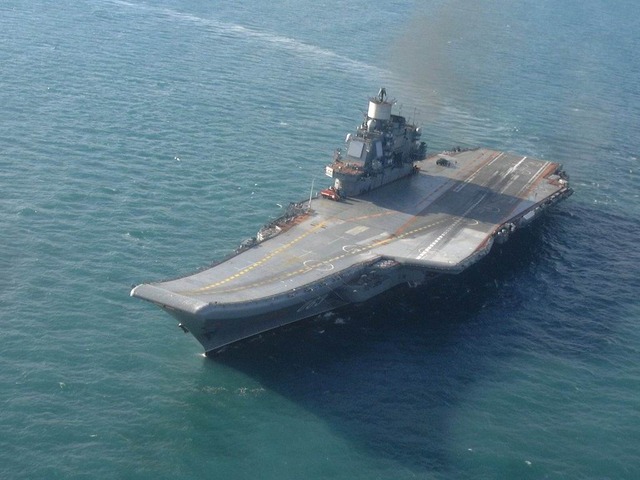 Varyag sea trials in August, 2011.
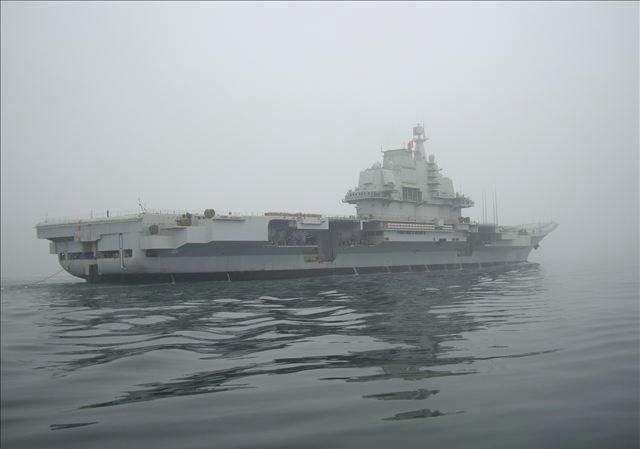  At this time the final systems fit, propulsion fit and CVW composition of the PLAN Varyag is not known, other than the intended use of the J-15B Flanker D. Therefore any assessments of the vessel's role and strategic impact would be at best speculative. There are numerous reports on PLAN work to develop and construct additional carriers, and claims these would use nuclear propulsion. At this time detail is insufficient to form strong conclusions. It is likely that any indigenous carrier design would be based largely on the Item 1143.5, as this is the lowest risk strategy for the PLAN. What can be stated with certainty at this time is that the PLAN intends to operate a fleet of CVs, and that these CVs will be equipped with the very competitive long range J-15B Flanker D. As such the PLAN will possess the strongest naval aviation capability in the WESTPAC and Indian Ocean regions, other than that of the US Navy. |
Chinese Observations on the PLAN Carrier Battle GroupThe most obvious and significant advancements in the PLA's CV program are the commencement of sea trials of China’s CV and flight testing of its attendant J-15B strike fighter1. For self-defense the CV is to be fitted with four sponson mounted FLS-1 anti-missile system analogous to the US Navy’s RAM system.2 Chinese magazine articles on operating aircraft carriers reveal, in two issues of Binqi Zhishi, extensive discussion on sensors, both shipboard and airborne, AEW systems, especially rotary wing, the technology behind aircraft launching and arresting systems. Fire control and damage control, and operating in extreme temperatures are also examined. The positioning of aircraft on the deck during take off and landing, as well as the different types of aircraft, are discussed in detail. This is especially so on how LRMP aircraft, UAVs and escort vessels contribute to the defence of the CVBG. If the PLAN were to deploy the number and class of escorts used by a US Navy CVBG, it would commit most of PLAN's Type 52C air warfare destroyers and modern frigates. If it were to use a European style of escort deployment, then it would still require one Type 52C air warfare destroyer, two or three modern frigates and an underway replenishment ship. As the Falklands campaign in 1982 demonstrated, if a credible submarine and air threat exists, the PLAN would need all of its modern escort vessels to protect the aircraft carrier. Most of the articles in the Bingqi Zhishi 6A/2011 look how to defend an aircraft carrier from both air and submarine threats. The PLAN regard the US Navy’s LHAs as support carriers for the Nimitz class aircraft carriers, as one of the article reveals.3 With the PLAN’s four LPDs capable of only carrying four medium sized helicopters, compared to over 20 on a US Navy LHA, then it would have trouble assisting the aircraft carrier without losing its helicopters for ship-to-shore movement.4 |
Shenyang J-15B Flanker D Carrier Borne Strike FighterA J-15B prototype in flight. The design is a reverse engineered Su-27K based on prototype hardware acquired in the Ukraine circa 2001. China's reverse engineering of the early model Su-27SK Flanker B airframe into the Chinese built J-11B is well documented, and resulted in a heated public dispute with Russia over violation of intellectual property rights and licence terms for the domestic build of the J-11A. The J-11B is indeed aerodynamically and structurally almost identical to the Su-27SK, but the avionics and systems are Chinese, and mostly different from the Russian hardware in the Su-27SK. While China overtly negotiated with Russia the purchase of KnAAPO built new Su-33 Flanker D fighters, Shenyang had in parallel been reverse engineering the airframe of the airframe of the very same aircraft, acquired in the Ukraine. The Flanker D is the Russian Navy's equivalent to the recently retired Grumman F-14 Tomcat, and currently the core of the Russian Navy CVW on the Admiral Kuznetsov CV. The Su-27K was the first canard equipped Flanker, as well as the first genuine multirole Flanker, and introduced the first aerial refuelling probe, buddy refuelling store, and guided munitions on a Flanker. The aircraft has a tailhook, folding wings and stabilators, and strengthened undercarriage for ski-jump launches and tailhook traps. US analyst Richard Fisher reported in 2008 that China procured in the Ukraine at least one derelict former Soviet T-10K prototype Su-27K aircraft. This aircraft was shipped to China, disassembled, and reverse engineered using the technique refined in the reverse engineering of the Su-27SK in the J-11B. Numerous photographs of the “J-15” have since emerged, as well as satellite imagery of a land based dummy carrier deck and ski-jump for testing and initial training15. Chinese
Observations on the J-15B
|
PLAN
Carrier
Borne Airborne
Early Warning & Control
|
Harbin Z-9C ASW/Multirole Helicopter |
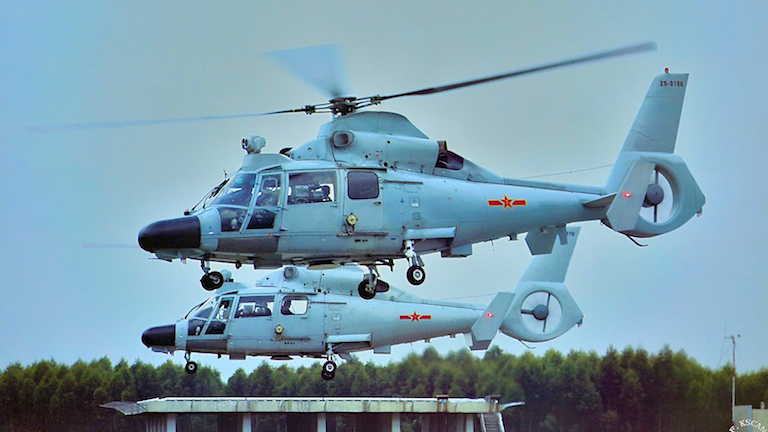 A pair of PLANAF Z-9C ASW
helicopters (Chinese Internet).
The
Z-9C is a Chinese license produced version of the Eurocopter AS-365N1 equipped with the indigenous KLC-1
multipurpose X-band
radar. It is the standard shipborne helicopter for the modern
Chinese destroyers and frigates7.
The PLANAF has acquired at least nine Ka-27/28 Helix helicopters, likely the Ka-27PL/Ka-28 Helix A. These aircraft are currently deployed at the 5th Joint Regiment, a development unit jointly administered by PLA and PLAN. This number would not be sufficient to equip even a single CVW, but individual aircraft have been observed deployed on the Sovremenniy class DDGs. The KLC-1 radar on the Z-9C scans through 180º at rate of eight per minute. At its operating height on over the horizon targeting mission, it can detect a small motorized naval vessel at 90km; a larger vessel between 110 km and 140 km depending on the size and sea state; and an anti-shipping missile (ASM) travelling at Mach 0.9 at approximately 20km in Sea State four. Over the Horizon Targeting/Anti-Ship Missile WarningThe helicopter typically operates 30 km ahead of the ship on OTHT missions but on anti-ASM watch can travel up to 130 km ahead of the vessel. The maximum range on OTHT missions would be that distance to provide time on station and gives a targeting range of 210 km for small vessels and up 270 km for larger ones. The time on station is commensurately less as is turnaround time.Anti-piracyIn the Gulf of Aden on anti-piracy patrols, the Z-9C is equipped with a thermal imager mounted on a fairing atop the cabin roof which flares around the rotor hub. On anti-piracy patrols the Z-9C can carry stub mounted weaponry including 19 x 57mm rocket pods and a QJZ89 12.7 x 108mm machine gun can be fired from the cabin doorway.TL-10 family of lightweight anti-ship missilesDue to the development of advanced anti-ship missiles, the PLAN is progressively introducing countermeasures, including the use of guard helicopters and has also developed the TL-10A and TH-10B light ASMs. Helicopter launched, there are designed for use against patrol boat and corvette sized targets by six–tonne size helicopters like the Z-9C and Lynx.The
TL-10A and B use the same body and engine, are 2.5 m long, 0.18m
wide, and weigh 105kg with a 30kg warhead. They cruise at Mach 0.85
and have a maximum range of 15km. The difference is that the TL-10A
uses an autonomous electro-optical seeker to acquire its target,
whereas the TL-10B uses an autonomous radar seeker. Capable of being
launched 15m above the sea, the TL-10B missile has been fitted to the
Z-9C.
The TL-10C with an advanced guidance system is under development. 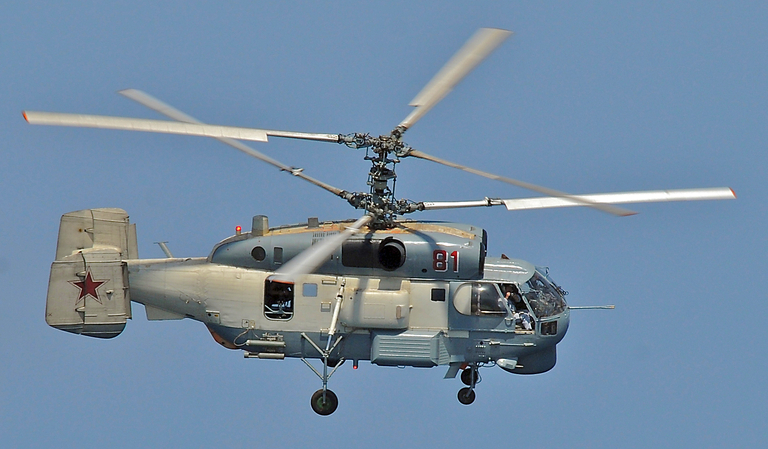 Kamov Ka-27PS Helix D ASW/ASuW
helicopter of the Admiral Vinogradov air detachment (US Navy).
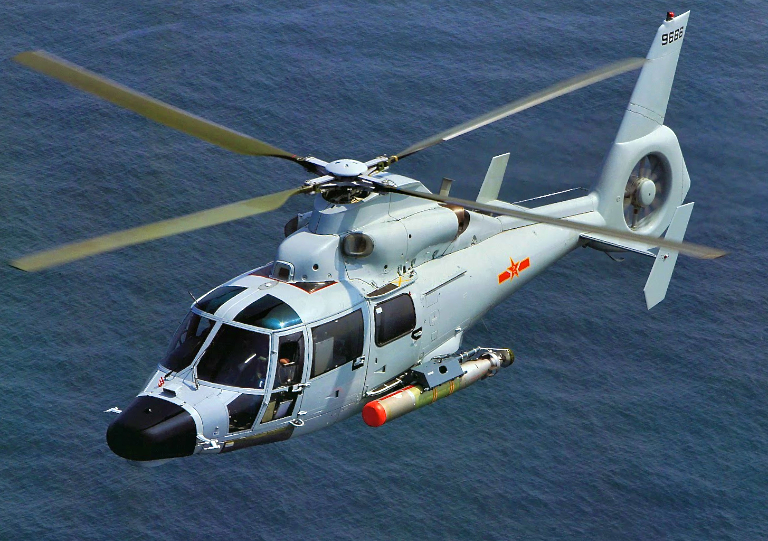 A PLANAF Z-9C ASW helicopter on a
torpedo delivery run (Chinese Internet).
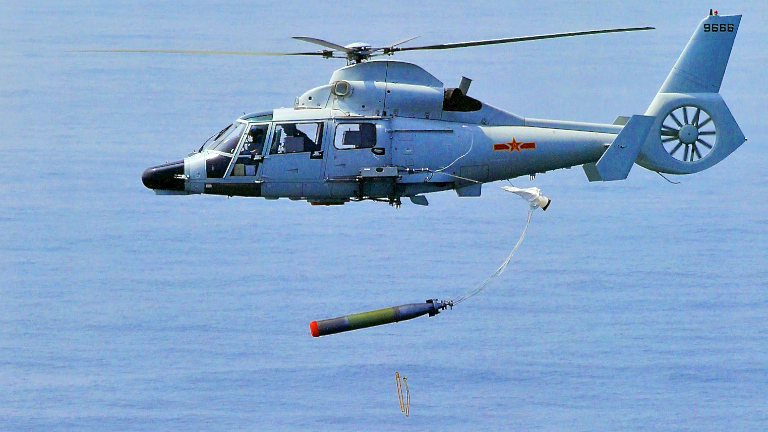 |
References |
|
 |
Imagery Sources: Chinese Internet. Layout / Line Artwork: © 2000 - 2012 Carlo Kopp Technical
Report APA-TR-2012-0402
|
|
|||||||||||||
![Sukhoi PAK-FA and Flanker Index Page [Click for more ...]](APA/flanker.png) |
![F-35 Joint Strike Fighter Index Page [Click for more ...]](APA/jsf.png) |
![Weapons Technology Index Page [Click for more ...]](APA/weps.png) |
![News and Media Related Material Index Page [Click for more ...]](APA/media.png) |
||||||||||
![Surface to Air Missile Systems / Integrated Air Defence Systems Index Page [Click for more ...]](APA/sams-iads.png) |
![Ballistic Missiles and Missile Defence Page [Click for more ...]](APA/msls-bmd.png) |
![Air Power and National Military Strategy Index Page [Click for more ...]](APA/strategy.png) |
![Military Aviation Historical Topics Index Page [Click for more ...]](APA/history.png)
|
![Information Warfare / Operations and Electronic Warfare Index Page [Click for more ...]](APA/iw.png) |
![Systems and Basic Technology Index Page [Click for more ...]](APA/technology.png) |
![Related Links Index Page [Click for more ...]](APA/links.png) |
|||||||
![Homepage of Australia's First Online Journal Covering Air Power Issues (ISSN 1832-2433) [Click for more ...]](APA/apa-analyses.png) |
|||||||||||||
| Artwork, graphic design, layout and text © 2004 - 2014 Carlo Kopp; Text © 2004 - 2014 Peter Goon; All rights reserved. Recommended browsers. Contact webmaster. Site navigation hints. Current hot topics. | |||||||||||||
|
Site Update
Status:
$Revision: 1.753 $
Site History: Notices
and
Updates / NLA Pandora Archive
|
|||||||||||||
|
|
Tweet | Follow @APA_Updates | |||||||||||
|
|
|||||||||||||
|
|
|||||||||||||
![F-111 Aardvark Index Page [Click for more ...]](APA/f-111.png)
![F/A-18 Hornet and Super Hornet Index Page [Click for more ...]](APA/fa-18a.png)
![Aerial Refuelling and Airlift Capabilities Index Page [Click for more ...]](APA/aar-lift.png)
![Directed Energy Weapons and Electromagnetic Bombs Index Page [Click for more ...]](APA/dew.png)
![Notices and Updates Index Page [Click for more ...]](APA/notices-128.png)
![APA NOTAM and Media Release Index Page [Click for more ...]](APA/notams-128.png)
![APA Research Activities and Policy / Technical Reports Index [Click for more ...]](APA/research-128.png)
![Search Air Power Australia Website [Click for more ...]](APA/search-128.png)
![Briefings and Submissions - Air Power Australia [Click for more ...]](APA/briefs-128.png)
![Air Power Australia Contacts [Click for more ...]](APA/contacts-128.png)
![Funding Air Power Australia [Click for more ...]](APA/funding-258.png)


